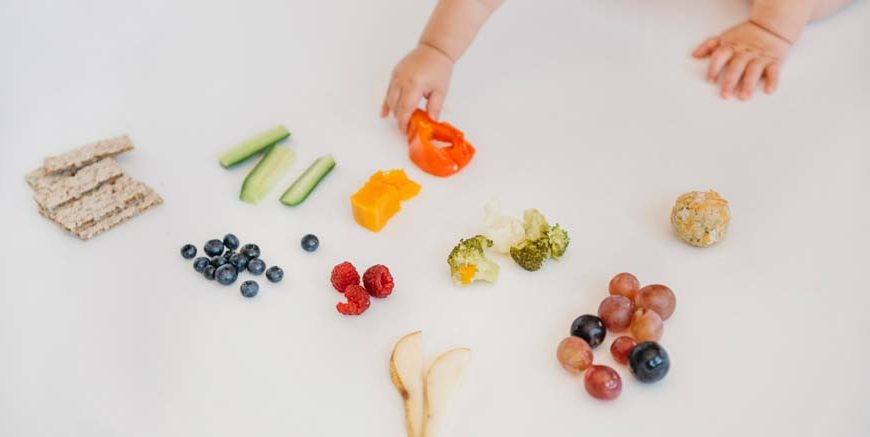Introducing solid foods to your baby is an exciting milestone in their development. As they reach six months of age, their nutritional needs change, and they are ready to explore new tastes and textures. This article provides a 6-month baby food chart, food ideas for 6 months old babies, and recipes for six-month-old babies. We will also discuss how many times a six-month-old should eat, and offer tips for making this transition smooth and enjoyable for your baby.
6 Month Baby Food Chart
When planning your 6-month baby food chart, it’s important to include a variety of foods to provide all the essential nutrients for your baby’s growth and development. At six months, your baby is ready to try pureed or mashed fruits, vegetables, and grains, as well as some proteins. Here is a suggested 6-month baby food chart:
- Fruits:
- Vegetables:
- Grains:
- Proteins:
– Apples (cooked and pureed) – Avocado (mashed) – Banana (mashed) – Pears (cooked and pureed)
– Carrots (cooked and pureed) – Green peas (cooked and pureed) – Sweet potatoes (cooked and pureed) – Squash (cooked and pureed)
– Baby rice cereal – Baby oatmeal cereal – Barley cereal
– Pureed lentils – Pureed chickpeas – Pureed tofu
Remember to start with single-ingredient foods and gradually introduce new foods every few days to monitor for any allergic reactions.
Food Ideas for 6 Months Old Babies
As you explore food ideas for 6 months old babies, consider the following options to ensure a balanced and nutritious diet:
- Fruit and vegetable purees:
- Grain and protein combinations:
- Fruit, vegetable, and grain combinations:
– Apple and pear puree – Avocado and banana mash – Carrot and sweet potato puree – Green pea and squash puree
– Baby rice cereal with pureed lentils – Baby oatmeal cereal with pureed chickpeas – Barley cereal with pureed tofu
– Apple and carrot puree with baby rice cereal – Pear and green pea puree with baby oatmeal cereal – Banana and sweet potato mash with barley cereal
Recipes for Six Month Old Baby
Introducing solids should be fun and enjoyable for both you and your baby. Try these simple and nutritious recipes for six-month-old babies to get started:
- Apple and Pear Puree:
- Avocado and Banana Mash:
- Carrot and Sweet Potato Puree:
- Green Pea and Squash Puree:
– Peel, core, and chop 1 apple and 1 pear – Steam the fruit until soft – Puree the cooked fruit using a blender or food processor – Serve at room temperature
– Peel and remove the pit from 1 ripe avocado – Peel 1 ripe banana – Mash the avocado and banana together until smooth – Serve at room temperature
– Peel and chop 1 carrot and 1 small sweet potato – Steam the vegetables until soft – Puree the cooked vegetables using a blender or food processor – Serve at room temperature
– Steam 1 cup of frozen green peas and 1 cup of chopped squash until soft – Puree the cooked vegetables using a blender or food processor – Serve at room temperature
How Many Times Should a Six Month Old Eat?
At six months, your baby is still getting most of their nutrition from breast milk or formula. However, it’s essential to start introducing solid foods to supplement their diet. When considering how many times a six-month-old should eat, aim for two to three solid meals per day, in addition to their regular milk feeds.
Keep the following tips in mind:
- Start small:
- Follow their cues:
- Be patient:
Begin with one or two teaspoons of pureed or mashed food, and gradually increase the quantity over time.
Pay attention to your baby’s hunger and fullness signals. If they seem interested in eating more, offer additional food. If they show signs of fullness, stop feeding and try again later.
Introducing solids is a learning process for both you and your baby. It may take some time for them to get used to new tastes and textures, so don’t be discouraged if they initially refuse certain foods. Keep offering a variety of options and be patient.
Caution While Preparing Stage 1 Baby Food
Stage 1 baby food refers to the first solid foods that you introduce to your baby around the age of six months. These foods are typically single-ingredient, pureed, or mashed and are easy for your baby to digest. It’s crucial to exercise caution when preparing stage 1 baby food to ensure your baby’s safety and overall health. Here are some essential tips and examples to help you navigate the process:
- Ensure cleanliness and hygiene:
- Introduce one food at a time:
- Avoid added sugar, salt, and artificial flavours:
- Cook and puree foods thoroughly:
- Gradually introduce texture:
- Be aware of common allergens:
Make sure your hands, utensils, and preparation area are clean before preparing your baby’s food. Wash all fruits and vegetables thoroughly to remove any dirt or pesticides. Cooked foods should be stored in a clean, airtight container and refrigerated. Discard any leftover food that has been in contact with your baby’s saliva to avoid bacterial growth.
Example: When making apple puree, wash your hands, the apple, and all the tools you’ll be using. After preparing the puree, store any leftovers in a clean container and refrigerate for up to three days.
Introduce one new food at a time and wait for at least three days before adding another new food to your baby’s diet. This waiting period allows you to monitor for any allergic reactions or digestive issues.
Example: If you introduce pureed carrots as the first solid food, wait for three days before introducing pureed pears. Observe your baby for any signs of discomfort, rashes, or digestive problems.
Stage 1 baby foods should not contain added sugar, salt, or artificial flavours, as these can be harmful to your baby’s developing kidneys and taste buds.
Example: When preparing sweet potato puree, do not add sugar or salt. The natural sweetness of the sweet potato will be sufficient for your baby’s taste.
Make sure to cook fruits and vegetables until they are soft and tender to ensure easy digestion. Puree or mash the food to a smooth consistency, avoiding any lumps or chunks that could pose a choking hazard.
Example: When preparing pea puree, steam the peas until they are soft and blend them to a smooth consistency. If necessary, strain the puree to remove any lumps or skins.
As your baby becomes more accustomed to eating solids, you can slowly introduce more textured foods. However, be cautious and ensure that the food is still soft and easy to swallow.
Example: After your baby has been eating pureed fruits and vegetables for a few weeks, you can try mashing banana or avocado with a fork, leaving some small soft lumps.
Some foods, such as eggs, nuts, dairy, and wheat, are common allergens. Consult your paediatrician before introducing these foods and be vigilant for any signs of an allergic reaction.
Example: Before introducing pureed tofu (which contains soy, a common allergen), discuss with your paediatrician and monitor your baby closely for any reactions after feeding.
Introducing your six-month-old to solid foods is an exciting milestone that opens up a world of new tastes and textures. By following a 6-month baby food chart, exploring food ideas for 6-month- old babies, and trying out recipes for six-month-old babies, you can ensure your little one gets the essential nutrients they need for healthy growth and development. Remember to be patient and follow your baby’s cues when determining how many times a six-month-old should eat.
At EuroKids, we understand the importance of proper nutrition during this critical period in your baby’s life. Our experienced team is dedicated to providing the best care and guidance to parents as they navigate this exciting milestone.
















